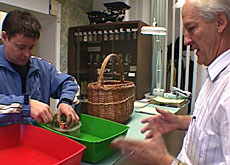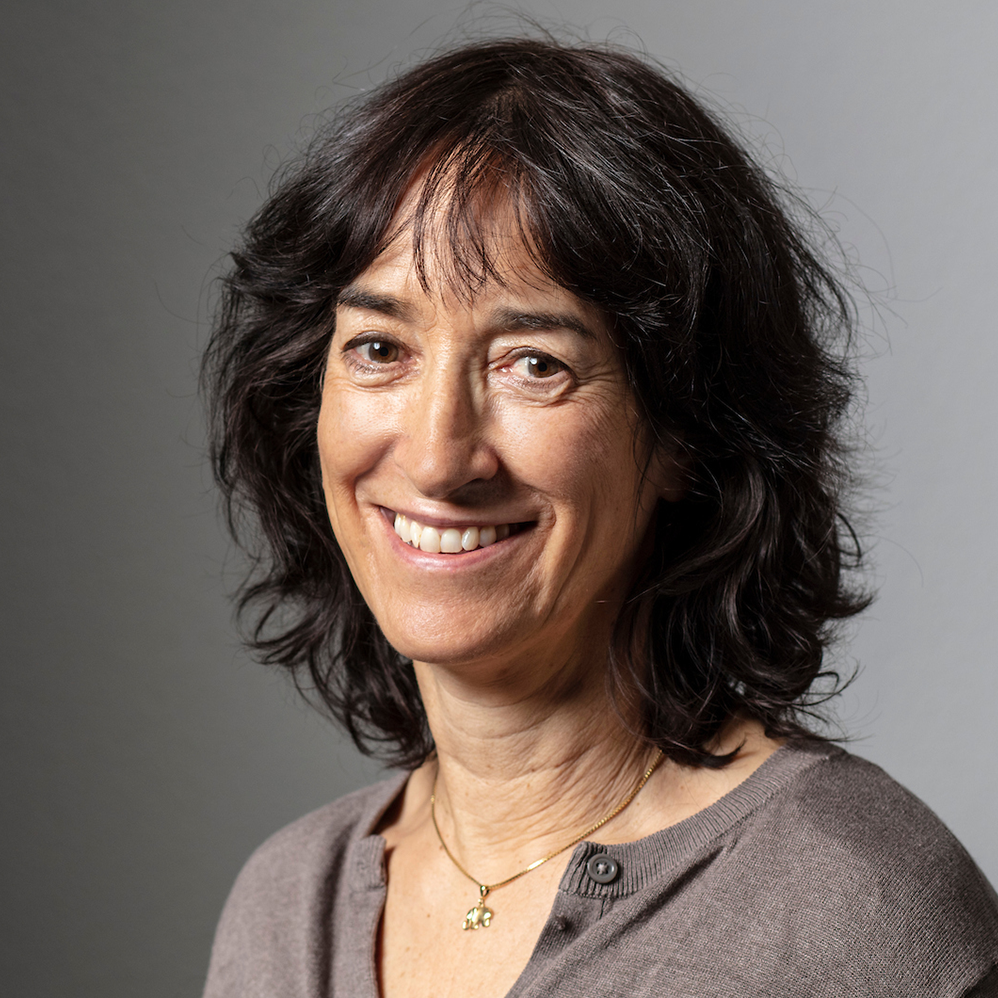
Inspectors pick out poisonous fungi

It’s the height of the mushroom season in Switzerland and the country’s normally quiet forests are teeming with life.
Mushroomers young and old can be glimpsed through the autumn leaves, filling their wicker baskets with all types of fungi.
There are an estimated 6,000 different types of mushroom in Europe. They are particularly abundant in Switzerland, where mushroom picking is a popular hobby.
The woodlands of Dentenberg near Worb in canton Bern contain both deciduous and coniferous trees, creating an ideal environment for a wide variety of fungi.
Dieter Lötscher, a Bern-based mushroom expert and food inspector, says Dentenberg is home to many edible mushrooms such as lactarius salmonicolor, lepista nebularis, and chalciporus piperatus.
But he warns that danger also lurks in the woods. Many wild mushrooms are poisonous and a few are even deadly, so mushroom hunting is not a hobby for the uninformed.
Last Supper
According to Lötscher, mushrooms from the Amanita family, which includes the Death Cap, are among the most poisonous. Victims suffer stomach pains, vomiting and diarrhoea for up to a week.
Without early medical intervention, coma and death by liver failure can occur between one and two weeks after eating a Death Cap.
And Fly Agaric mushrooms, with their bright red caps and white scales, may look like fairytale toadstools – but only a wicked witch would serve them for dinner, as they can cause violent retching and hallucinations.
The Druids and Celts believed they were in direct communication with the Earth and the Universe when they ate these fungi.
This is why Switzerland has special mushroom inspectors – like Lötscher – who operate offices across the country. At this time of year, there are queues at the control points.
The city of Bern has provided mushroom inspections for the past 100 years and the advice is free of charge.
There are further mushroom inspection posts in eight suburbs around Bern, but because a fee is payable, pickers often come to the city instead.
The past few years have been abysmal for mushroomers because of the dry weather, but 2004 seems to be picking up. Last year, only 334 kilograms were inspected in the Bern area, compared to 2,394kg in the peak year of 1992.
Life-savers
Walter Hardorn, who has been a mushroom inspector for 26 years, says he saves at least one life every year by identifying deadly fungi brought in by pickers.
Last year he was called to hospital three times to help identify the culprit in poisoning cases.
“Experience counts for a lot. We just have to take one look in the basket to see whether the picker knows anything about mushrooms,” Hardorn told swissinfo.
An expert will separate dubious or unrecognisable mushrooms from the rest, for fear of contaminating the others.
“If poisonous fungi are mixed with the others, you might as well throw the whole lot away,” said Hardorn.
The inspector says that cures for mushroom poisoning vary and that prompt action is always necessary.
“The best thing to do in suspected cases of poisoning is to contact a doctor immediately,” he said. “Save any leftovers from the offending meal, to help establish the cause.”
Useful fungi
Mushrooms are an important part of the ecosystem. Some types, such as mykorrhiza, grow among tree roots and enable trees to better absorb water and nutrients from the ground.
They also provide protection from diseases, dehydration and frost. Saprobe mushrooms help to turn dead roots, leaves, needles and wood into humus, which allows nutrients and minerals back into the ground.
In Switzerland, 12 varieties of mushroom are protected. There are also rules in every canton governing when harvesting is allowed, and the quantities permitted.
In Bern the maximum is two kilos per person, per day. These limits are set to prevent over-harvesting and to safeguard the mushrooms’ natural environment.
Fungi are a food source for mice, deer, squirrels, snails and insects, and also provide shelter for the latter.
“So next time you see a clump of mushrooms growing,” said Lötscher, “don’t trample them, respect them.”
swissinfo, Julie Hunt in Worb
Fresh mushrooms contain the following:
88-94% water.
3-4% per cent protein.
20-40% calories per 100 grams.
3-6% carbohydrates.
Vitamins B1, B2, D.
Mushroom pickers could be risking their lives every time they gather what they think are tasty morsels for the table.
Many harmless-looking fungi are poisonous; some are even deadly.
In cantons and communities around Switzerland, mushroom inspectors are on hand to offer life-saving advice.

In compliance with the JTI standards
More: SWI swissinfo.ch certified by the Journalism Trust Initiative





























You can find an overview of ongoing debates with our journalists here . Please join us!
If you want to start a conversation about a topic raised in this article or want to report factual errors, email us at english@swissinfo.ch.